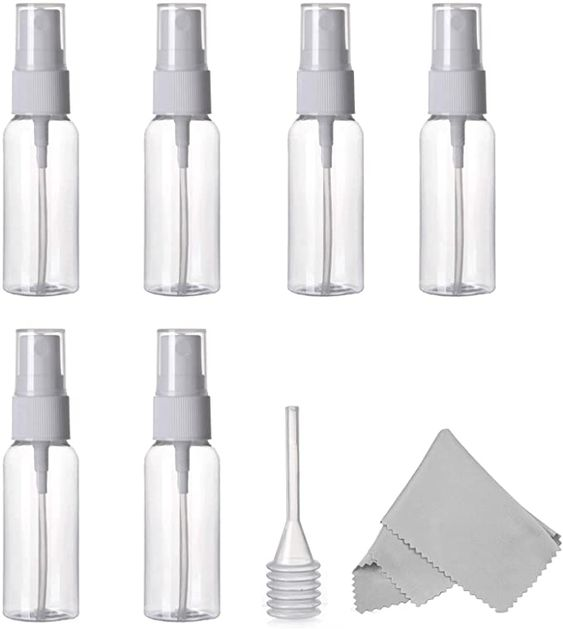Mono-material packaging, as the name suggests, is a packaging solution that uses a single type of material. This innovative approach is gaining traction in the packaging industry due to its potential to enhance recyclability and sustainability.
Unlike traditional packaging, which often involves lots of different materials, mono-material packaging simplifies the recycling process by using just one type of material, such as polyethylene (PE) or polypropylene (PP). This approach reduces the complexity of separating different materials during the recycling process, thereby increasing efficiency and reducing waste.
The Evolution of Packaging: From Multi-Material to Mono-Material

The packaging industry has come a long way. In the past, packaging was often made from a mix of different types of plastics, paper, and other materials.
This multi-material approach, while cost-effective and versatile, posed significant challenges for recycling. Different materials have different properties and require separate recycling processes, making it difficult and energy-intensive to recycle multi-material packaging.
Enter mono-material packaging. This innovative solution emerged as a response to the growing demand for sustainable packaging. By using a single type of material, mono-material packaging simplifies the recycling process and reduces the amount of waste that ends up in landfills.
This shift towards mono-material solutions represents a significant step forward in the packaging industry’s journey towards sustainability.
The Environmental Impact of Traditional Multi-Material Packaging
Traditional multi-material packaging, while effective in protecting products, has a significant environmental impact. The combination of different materials such as polyvinyl chloride (PVC), aluminum foil, and polystyrene (PS) in packaging makes the recycling process complex and energy-intensive. This complexity often results in packaging waste ending up in landfills, contributing to global warming and increasing our carbon footprint.
Moreover, the production of these different materials requires a substantial amount of energy and resources, further exacerbating their environmental impact. For instance, the production of PVC, a common packaging material, releases harmful chemicals into the environment and consumes a significant amount of energy.
| Aspect | Traditional Multi-Material Packaging | Mono-Material Packaging |
| Recyclability | Difficult to recycle due to the need to separate different materials. | Easier to recycle as it’s made from a single type of material. |
| Energy Consumption | High energy consumption in the production and recycling process due to the complexity of different materials. | Lower energy consumption in production and recycling due to the simplicity of using a single material. |
| Waste Production | High waste production as a significant portion ends up in landfills due to recycling challenges. | Reduced waste production as it’s easier to recycle, leading to less material ending up in landfills. |
| Carbon Footprint | High carbon footprint due to energy-intensive production and recycling processes. | Lower carbon footprint due to less energy-intensive production and recycling processes. |
| Resource Use | High resource use in the production of different materials. | Reduced resource use as more packaging can be made from recycled materials. |
How Mono-Material Packaging Supports the Circular Economy?
Mono-material packaging, made from a single type of material, supports this model by enhancing the recyclability of packaging.
Mono-material packaging simplifies the recycling process, as there’s no need to separate different materials. This increased efficiency in recycling not only reduces waste but also conserves resources by allowing more packaging to be made from recycled materials. Furthermore, mono-material packaging often uses less energy in production compared to multi-material alternatives, contributing to a reduction in carbon emissions.
The Role of Mono-Material Packaging in Reducing Landfill Waste

Landfill waste is a pressing environmental issue. Traditional multi-material packaging, with its complex mix of different materials, often ends up in landfills due to the difficulties in recycling. This not only takes up valuable space but also contributes to the release of harmful greenhouse gases.
Mono-material packaging, on the other hand, offers a more sustainable solution. By using a single type of material, it simplifies the recycling process, increasing the likelihood that packaging waste will be recycled rather than sent to landfills. For instance, this material packaging made from polyethylene (PE) or polypropylene (PP) can be easily recycled into new packaging materials, reducing the need for virgin materials and minimizing waste.
Moreover, mono-material packaging can be designed for reusability, further reducing waste. For example, mono-material packages made from durable materials can be cleaned and reused, extending their lifespan and reducing the need for new packaging.
Exploring the Benefits of Mono-Material Packaging for Brands
For brand owners, mono-material packaging offers several advantages. First and foremost, it aligns with the growing consumer demand for sustainable packaging. As awareness of environmental issues increases, consumers are seeking out brands that prioritize sustainability. By adopting mono-material packaging, brands can demonstrate their commitment to sustainability and attract environmentally conscious consumers.
In addition, it can offer cost savings in the long run. While the initial investment in mono-material packaging solutions may be higher, the increased efficiency in the recycling process and potential for reuse can result in cost savings over time. Furthermore, by reducing waste and energy use, use this kind of material of packaging can help brands reduce their carbon footprint, potentially qualifying them for environmental certifications or incentives.
Challenges in Implementing Mono-Material Packaging Solutions
While mono-material packaging offers numerous benefits, implementing it is not without challenges.
- One of the main hurdles is the need to balance sustainability with functionality. Different materials offer different properties – for instance, some materials may be excellent at preventing moisture or water vapor from reaching the product, while others may provide the necessary stiffness or durability. In multi-material packaging, these different properties can be combined, but in mono-material packaging, finding a single material that meets all these requirements can be challenging
- Cost is another factor. While mono-material packaging can offer long-term cost savings through increased efficiency in the recycling process, the initial investment can be higher. This can be a deterrent for some companies, particularly small and medium-sized enterprises.
- Finally, there’s the issue of consumer acceptance. While consumers are increasingly demanding sustainable packaging, they also expect packaging to be functional and convenient. If mono-material packaging does not meet these expectations, it may not be accepted by consumers, regardless of its environmental benefits.
Overcoming Design Limitations in Mono-Material Packaging
Despite these challenges, innovative solutions are emerging to overcome the design limitations of mono-material packaging. For instance, advancements in polymer science are leading to the development of new types of plastics with different properties, allowing for the creation of mono-material packaging that is both functional and recyclable.
In addition, companies are exploring ways to improve the design of mono-material packaging to enhance its functionality. For example, innovative design techniques can be used to increase the stiffness of mono-material packaging, making it suitable for a wider range of products.
Moreover, education and communication can play a crucial role in gaining consumer acceptance. By clearly communicating the environmental benefits of mono-material packaging and how to properly recycle it, companies can help consumers understand and appreciate the value of these sustainable packaging solutions.
Innovative Mono-Material Packaging Solutions in the Market
The packaging industry is witnessing a surge of innovative mono-material packaging solutions. For instance, in the flexible packaging sector, companies are developing mono-material films that combine the properties of different types of plastics. These films offer the functionality of traditional multi-material films, such as barrier properties and stiffness, while being fully recyclable.
Another example is the development of mono-material paperboard packaging. This type of packaging is made entirely from fibre, making it easy to recycle in existing paper recycling streams. Some companies are even developing coatings for paperboard that are both recyclable and provide the necessary barrier properties, replacing the need for plastic or aluminum coatings.
These innovative solutions demonstrate the potential of mono-material packaging to meet the demands of both sustainability and functionality.
The Future of Mono-Material Packaging: Trends and Predictions
Looking ahead, the future of mono-material packaging looks promising. As the demand for sustainable packaging continues to grow, we can expect to see further innovation in this area. One trend to watch is the development of new materials with enhanced properties, allowing for the creation of mono-material packaging that is both high-performing and recyclable.
In addition, we can expect to see more collaboration between packaging manufacturers, brand owners, and recycling facilities. Such collaboration is crucial to ensure that mono-material packaging is designed not only for recyclability but also for the actual recycling processes in place.
Finally, as consumers become more aware of the environmental impact of packaging, we can expect to see a growing demand for mono-material packaging. This consumer demand, coupled with the environmental and economic benefits of mono-material packaging, is likely to drive its adoption across various sectors, from the food industry to logistics.
What Are the Regulations and Standards Impacting Mono-Material Packaging?
Regulations and standards play a crucial role in the adoption of mono-material packaging. In many regions, governments are implementing regulations to promote the use of sustainable packaging. For instance, in Germany, packaging law encourages the use of mono-material packaging by offering financial incentives for packaging that is easy to recycle.
In addition to government regulations, industry standards also impact the adoption of mono-material packaging. For example, CEFLEX, a collaborative initiative of European companies and associations representing the entire value chain of flexible packaging, has developed guidelines for the design of recyclable flexible packaging.
These guidelines promote the use of mono-material packaging and provide practical advice for packaging designers.
However, regulations and standards can also pose challenges. For instance, different regions may have different regulations and recycling infrastructure, making it difficult for companies to design packaging that is recyclable across all markets. Therefore, it’s crucial for companies to stay up-to-date with the latest regulations and standards and to work closely with recycling facilities to ensure their packaging is recyclable in practice.
How Does Mono-Material Packaging Enhance Recycling Processes?
Mono-material packaging significantly enhances the recycling process. In traditional multi-material packaging, different materials must be separated before recycling, which can be a complex and energy-intensive process. However, mono-material packaging, made from a single type of material, simplifies this process.
For instance, mono-material packaging made from polyethylene (PE) can be easily recycled in existing PE recycling streams. There’s no need to separate different materials, which not only simplifies the recycling process but also increases its efficiency. This results in less waste and energy use, making the recycling process more sustainable.
Moreover, mono-material packaging can be designed for recyclability from the start. By considering the recycling process during the design phase, packaging can be created that is not only easy to recycle but also compatible with existing recycling infrastructure.
Consumer Perception and Demand for Mono-Material Packaging
Consumer perception and demand play a significant role in the adoption of mono-material packaging. As awareness of environmental issues grows, consumers are increasingly seeking out sustainable products and packaging. Mono-material packaging, with its enhanced recyclability and reduced environmental impact, aligns with these consumer values.
Research shows that consumers are willing to pay a premium for products with sustainable packaging. This willingness to pay more for sustainability provides a strong incentive for brands to adopt mono-material packaging. Moreover, by clearly communicating the environmental benefits of mono-material packaging, brands can enhance their reputation for sustainability and attract environmentally conscious consumers.
However, while consumers demand sustainable packaging, they also expect it to be functional and convenient. Therefore, it’s crucial for mono-material packaging to meet these expectations. Brands that can successfully combine sustainability with functionality and convenience in their packaging are likely to gain a competitive advantage in the market.
Conclusion
In conclusion, mono-material packaging holds significant potential for the packaging industry. By simplifying the recycling process and reducing environmental impact, mono-material packaging offers a sustainable solution that aligns with consumer demand and regulatory trends.
While there are challenges to overcome, the benefits of mono-material packaging are clear. With continued innovation and collaboration between packaging manufacturers, brand owners, and recycling facilities, mono-material packaging is poised to play a crucial role in the industry’s shift towards a circular economy.
As we move forward, it’s clear that mono-material packaging is not just a trend, but a long-term solution for sustainable packaging. By embracing this innovative approach, the packaging industry can make significant strides towards sustainability, while meeting the demands of consumers and regulators.
Contact us today if you want to elevate your brand with innovative designs, sustainable solutions, and a commitment to functionality!




